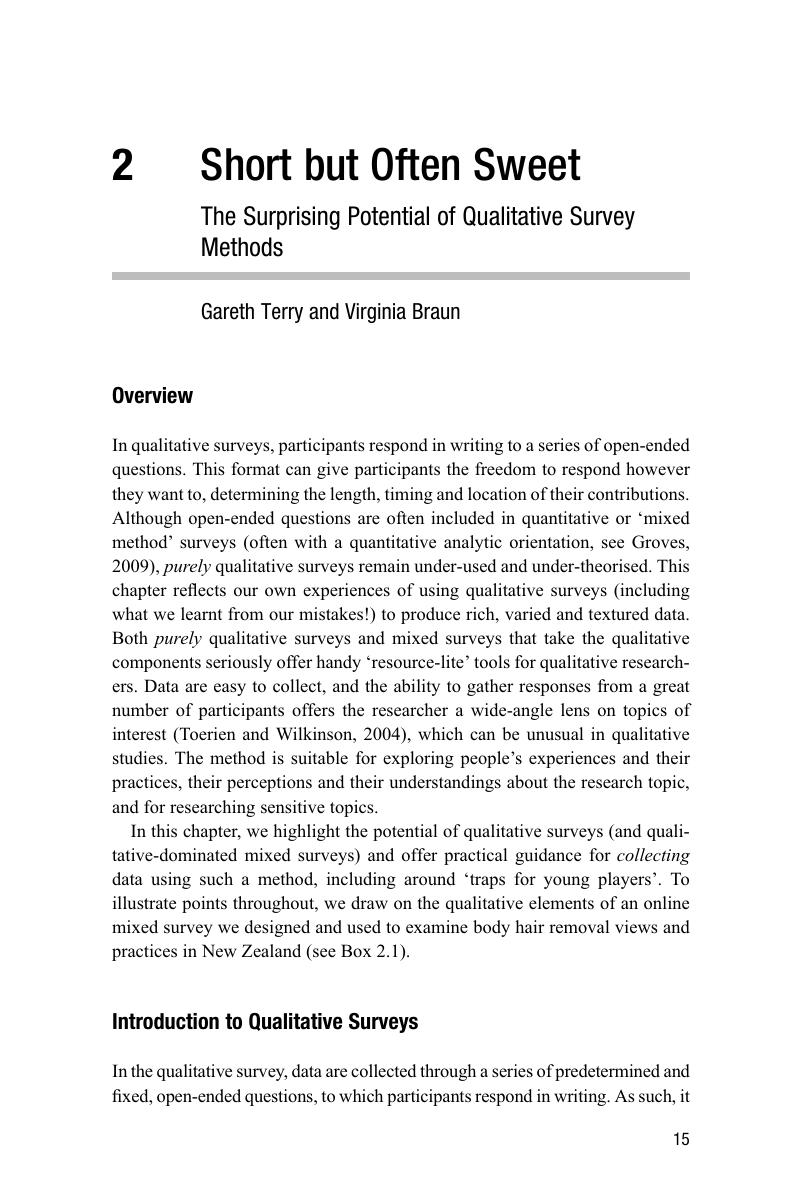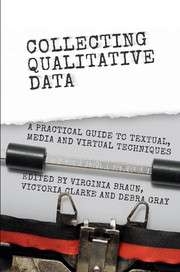Book contents
- Collecting Qualitative Data
- Collecting Qualitative Data
- Copyright page
- Contents
- Figures, Tables and Boxes
- Acknowledgements
- Contributors
- Foreword
- 1 Collecting Textual, Media and Virtual Data in Qualitative Research
- Part I Textual Data Collection
- 2 Short but Often Sweet
- 3 Once Upon a Time …
- 4 Hypothetically Speaking
- 5 ‘Coughing Everything Out’
- Part II Media Data Collection
- Part III Virtual Data Collection
- Afterword
- Glossary
- Index
- References
2 - Short but Often Sweet
The Surprising Potential of Qualitative Survey Methods
from Part I - Textual Data Collection
Published online by Cambridge University Press: 06 October 2017
- Collecting Qualitative Data
- Collecting Qualitative Data
- Copyright page
- Contents
- Figures, Tables and Boxes
- Acknowledgements
- Contributors
- Foreword
- 1 Collecting Textual, Media and Virtual Data in Qualitative Research
- Part I Textual Data Collection
- 2 Short but Often Sweet
- 3 Once Upon a Time …
- 4 Hypothetically Speaking
- 5 ‘Coughing Everything Out’
- Part II Media Data Collection
- Part III Virtual Data Collection
- Afterword
- Glossary
- Index
- References
Summary

- Type
- Chapter
- Information
- Collecting Qualitative DataA Practical Guide to Textual, Media and Virtual Techniques, pp. 13 - 14Publisher: Cambridge University PressPrint publication year: 2017
References
Further Resources: Online
Some examples of qualitative surveys can be found online at: http://studysites.uk.sagepub.com/braunandclarke/study/research.htm
There are a number of examples of qualitative survey data that can be analysed as practice at: http://studysites.uk.sagepub.com/braunandclarke/study/qualitative.htm
For learning the basics of HTML in order to modify an existing template from a web tool such as SurveyMonkey, we have found w3 schools extremely helpful: www.w3schools.com/
Further Resources: Readings
References
- 38
- Cited by



